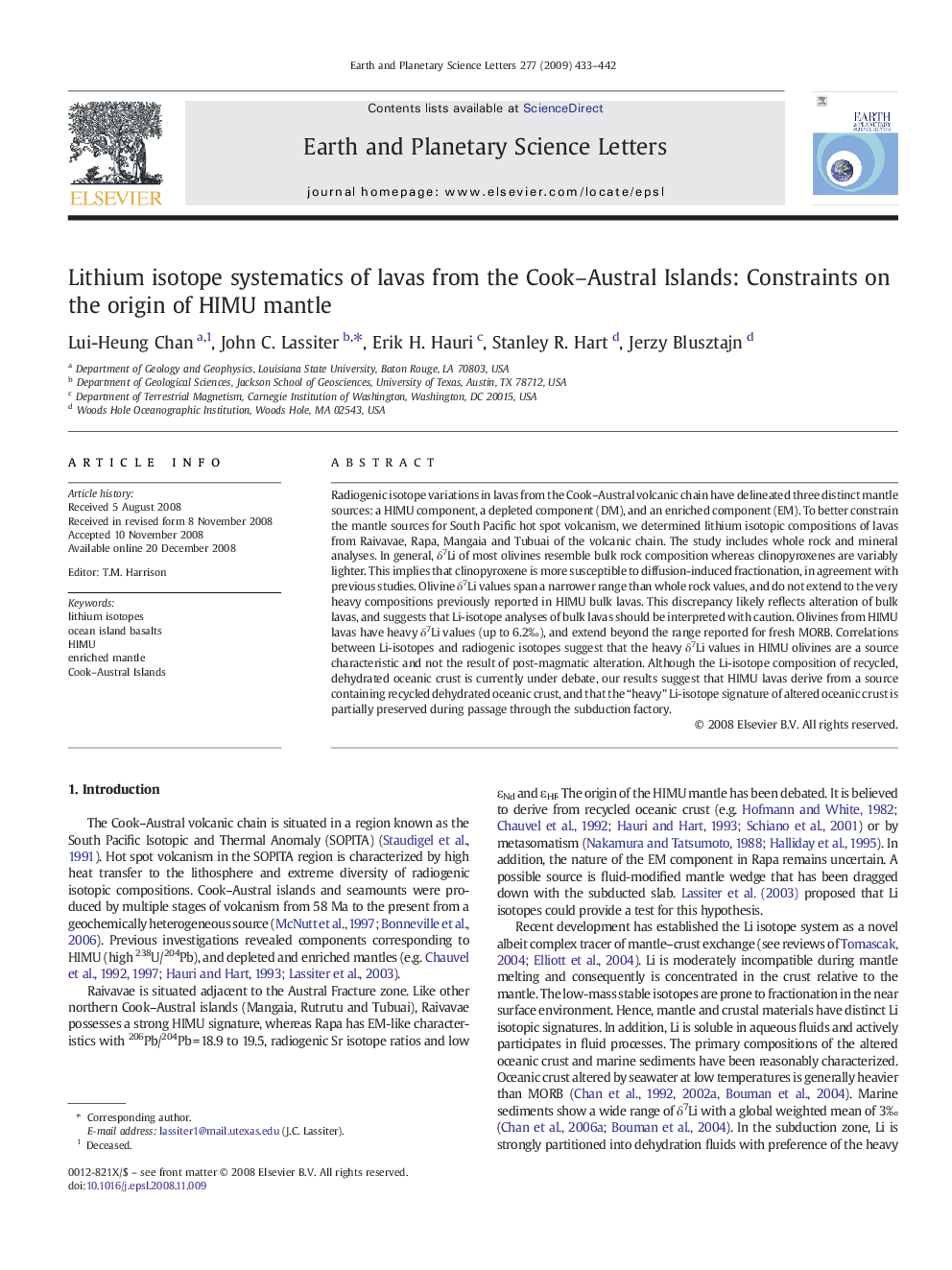| Article ID | Journal | Published Year | Pages | File Type |
|---|---|---|---|---|
| 4679423 | Earth and Planetary Science Letters | 2009 | 10 Pages |
Radiogenic isotope variations in lavas from the Cook–Austral volcanic chain have delineated three distinct mantle sources: a HIMU component, a depleted component (DM), and an enriched component (EM). To better constrain the mantle sources for South Pacific hot spot volcanism, we determined lithium isotopic compositions of lavas from Raivavae, Rapa, Mangaia and Tubuai of the volcanic chain. The study includes whole rock and mineral analyses. In general, δ7Li of most olivines resemble bulk rock composition whereas clinopyroxenes are variably lighter. This implies that clinopyroxene is more susceptible to diffusion-induced fractionation, in agreement with previous studies. Olivine δ7Li values span a narrower range than whole rock values, and do not extend to the very heavy compositions previously reported in HIMU bulk lavas. This discrepancy likely reflects alteration of bulk lavas, and suggests that Li-isotope analyses of bulk lavas should be interpreted with caution. Olivines from HIMU lavas have heavy δ7Li values (up to 6.2‰), and extend beyond the range reported for fresh MORB. Correlations between Li-isotopes and radiogenic isotopes suggest that the heavy δ7Li values in HIMU olivines are a source characteristic and not the result of post-magmatic alteration. Although the Li-isotope composition of recycled, dehydrated oceanic crust is currently under debate, our results suggest that HIMU lavas derive from a source containing recycled dehydrated oceanic crust, and that the “heavy” Li-isotope signature of altered oceanic crust is partially preserved during passage through the subduction factory.
